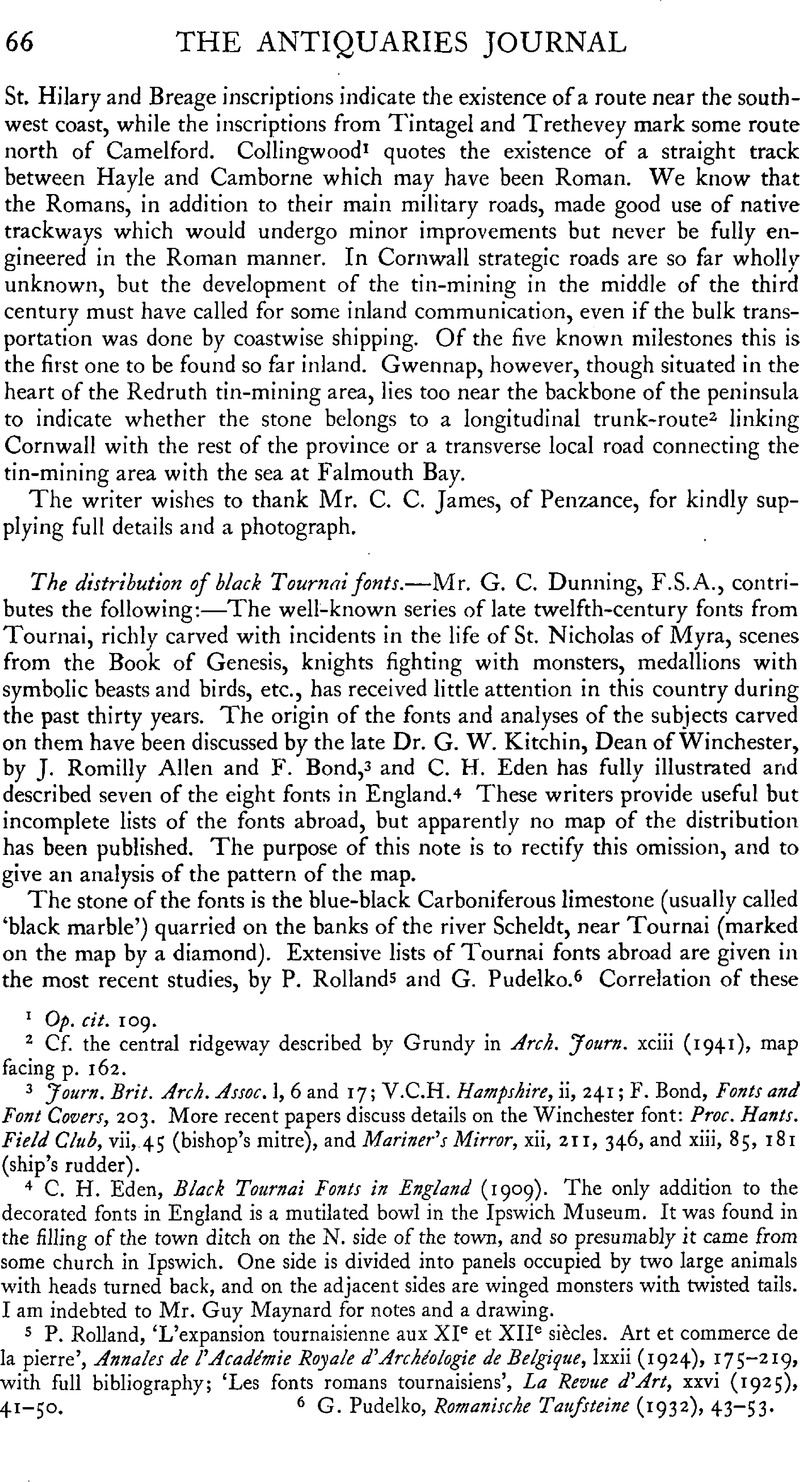Article contents
The distribution of black Tournai fonts
Published online by Cambridge University Press: 08 January 2012
Abstract

- Type
- Notes
- Information
- Copyright
- Copyright © The Society of Antiquaries of London 1944
References
page 66 note 3 Journ. Brit. Arch. Assoc. 1, 6 and 17; V.C.H. Hampshire, ii, 241; F. Bond, Fonts and Font Covers, 203. More recent papers discuss details on the Winchester font: Proc. Hants. Field Club, vii, 45 (bishop's mitre), and Mariner's Mirror, xii, 211, 346, and xiii, 85, 181 (ship's rudder).
page 66 note 4 Eden, C. H., Black Tournai Fonts in England (1909Google Scholar). The only addition to the decorated fonts in England is a mutilated bowl in the Ipswich Museum. It was found in the filling of the town ditch on the N. side of the town, and so presumably it came from some church in Ipswich. One side is divided into panels occupied by two large animals with heads turned back, and on the adjacent sides are winged monsters with twisted tails. I am indebted to Mr. Guy Maynard for notes and a drawing.
page 66 note 5 P. Rolland, ‘L'expansion tournaisienne aux XIe et XIIe siècles. Art et commerce de la pierre’, Annales de l'Acadimie Royale d'Archéologie de Belgique, lxxii (1924), 175–219Google Scholar, with full bibliography; ‘Les fonts romans tournaisiens’, La Revue d Art, xxvi (1925), 41–50.
page 66 note 6 Pudelko, G., Romanische Taufsteine (1932), 43–53Google Scholar.
page 67 note 1 Rolland suggests that the main roads radiating from Tournai to Bavay, Boulogne, and Oudenbourg were also responsible for the wide diffusion of the fonts. This contention is not supported by the pattern of the map.
page 68 note 1 Plain fonts at Boulge, Suffolk {Antiq. Journ. iii, 154) and at Iffley, Oxon. (R.C.H.M. City of Oxford, 155), are apparently of Tournai or some analogous stone. The inclusion of the Iffley font would extend the distribution well inland up the Thames.
page 68 note 2 R.C.H.M. Westminster Abbey, 78, pl. 202Google Scholar; Gardner, A., Handbook of English Medieval Sculpture, 174, figs. 208–9Google Scholar; Clapham, A. W., English Romanesque Architecture after the Conquest, 157, pls. 44–5.Google Scholar
- 5
- Cited by


